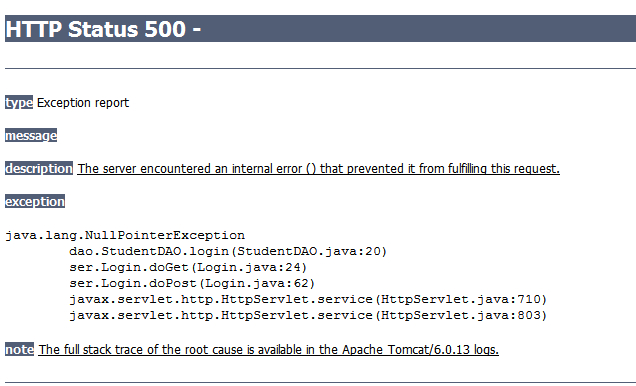Batch Insert In Java – JDBC(含中文总结)
//JDBC提供了数据库batch处理的能力,在数据大批量操作(新增、删除等)的情况下可以大幅度提升系统的性能。
Let’s see how we can perform batch insert in Java using JDBC APIs. Although you might already knew this, I will try to explain the basic to a bit complex scenarios.
In this note, we will see how we can use JDBC APIs like Statement andPreparedStatement to insert data in any database in batches. Also we will try to explore scenarios where we can run out of memory and how to optimize the batch operation.
So first, the basic API to Insert data in database in batches using Java JDBC.
Simple Batch
I am calling this a 易做图 batch. The requirement is 易做图. Execute a list of inserts in batch. Instead of hitting database once for each insert statement, we will using JDBC batch operation and optimize the performance.
Consider the following code:
Bad Code
String
[] queries = { "insert
into employee (name, city, phone) values ('A', 'X', '123')", "insert
into employee (name, city, phone) values ('B', 'Y', '234')", "insert
into employee (name, city, phone) values ('C', 'Z', '345')",}; Connection
connection = new
getConnection();Statement
statemenet = connection.createStatement(); for
(String query : queries) { statemenet.execute(query);}statemenet.close();connection.close();
This is the BAD code. You are executing each query separately. This hits the database for each insert statement. Consider if you want to insert 1000 records. This is not a good idea.
We’ll below is the basic code to perform batch insert. Check it out:
Good Code
Connection
connection = new
getConnection();Statement
statemenet = connection.createStatement(); for
(String query : queries) { statemenet.addBatch(query);}statemenet.executeBatch();statemenet.close();connection.close();
Note how we used addBatch() method of Statement, instead of directly executing the query. And after adding all the queries we executed them in one go using statement.executeBatch() method. Nothing fancy, just a 易做图 batch insert.
Note that we have taken the queries from a String array. Instead you may want to make it dynamically. For example:
import
java.sql.Connection;import
java.sql.Statement; //... Connection
connection = new
getConnection();Statement
statemenet = connection.createStatement(); for
(Employee employee: employees) { String
query = "insert
into employee (name, city) values('" +
employee.getName() + "','"
+ employee.getCity + "')"; statemenet.addBatch(query);}statemenet.executeBatch();statemenet.close();connection.close();
Note how we are creating query dynamically using data from Employee object and adding it in batch to insert in one go. Perfect! isn’t it?
wait.. You must be thinking what about SQL Injection? Creating queries like this dynamically is very prone to SQL injection. And also the insert query has to be compiled each time.
Why not to use PreparedStatement instead of 易做图 Statement. Yes, that can be the solution. Check out the below SQL Injection Safe Batch.
SQL Injection Safe Batch
Consider the following code:
import
java.sql.Connection;import
java.sql.PreparedStatement; //... String
sql = "insert
into employee (name, city, phone) values (?, ?, ?)";Connection
connection = new
getConnection();PreparedStatement
ps = connection.prepareStatement(sql); for
(Employee employee: employees) { ps.setString(1,
employee.getName()); ps.setString(2,
employee.getCity()); ps.setString(3,
employee.getPhone()); ps.addBatch();}ps.executeBatch();ps.close();connection.close();
Checkout the above code. Beautiful. We used java.sql.PreparedStatement and added insert query in the batch. This is the solution you must implement in your batch insert logic, instead of above Statementone.
Still there is one problem with this solution. Consider a scenario where you want to insert half million records into database using batch. Well, that may generate OutOfMemoryError:
java.lang.OutOfMemoryError:
Java heap space com.mysql.jdbc.ServerPreparedStatement$BatchedBindValues.<init>(ServerPreparedStatement.java:72) com.mysql.jdbc.ServerPreparedStatement.addBatch(ServerPreparedStatement.java:330) org.apache.commons.dbcp.DelegatingPreparedStatement.addBatch(DelegatingPreparedStatement.java:171)
This is because you are trying to add everything in one batch and inserting once. Best idea would be to execute batch itself in batch. Check out the below solution.
Smart Insert: Batch within Batch
This is a 易做图st solution. Consider a batch size like 1000 and insert queries in the batches of 1000 queries at a time.
String
sql = "insert
into employee (name, city, phone) values (?, ?, ?)";Connection
connection = new
getConnection();PreparedStatement
ps = connection.prepareStatement(sql); final
int
batchSize = 1000;int
count = 0; for
(Employee employee: employees) { ps.setString(1,
employee.getName()); ps.setString(2,
employee.getCity()); ps.setString(3,
employee.getPhone()); ps.addBatch(); if(++count
% batchSize == 0)
{ ps.executeBatch(); }}ps.executeBatch();
//
insert remaining recordsps.close();connection.close();
This would be the idea solution. This avoids SQL Injection and also takes care of out of memory issue. Check how we have incremented a counter count and once it reaches batchSize which is 1000, we callexecuteBatch().
SQL批处理是JDBC性能优化的重要武器,经本人研究总结,批处理的用法有三种。
package lavasoft.jdbctest;
import lavasoft.common.DBToolkit;
import java.sql.Connection;
import java.sql.PreparedStatement;
import java.sql.SQLException;
import java.sql.Statement;
/**
* JDBC的批量操作三种方式
*/
public class BatchExeSQLTest {
public static void main(String[] args) {
exeBatchStaticSQL();
}
/**
* 批量执行预定义模式的SQL
*/
public static void exeBatchParparedSQL() {
Connection conn = null;
&nb
补充:软件开发 , Java ,




